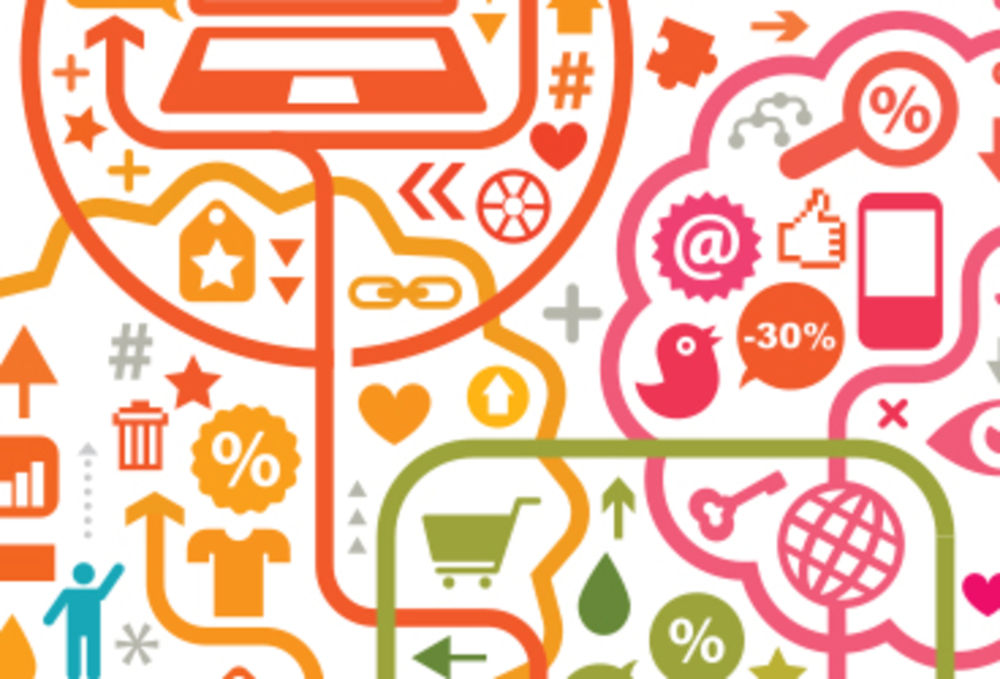Everyone has experienced the effects of data mining, whether they realize it or not.
Just think of the urban legend that says men are more likely to buy beer when they’re sent out for diapers. Customer data shows a strong correlation between the two products and as a result, an unnamed grocery store chain is alleged to sell diapers next to the beer aisle, resulting in increased sales of both items. And even though the source of this story has never been identified, it proves the point: From the old days of data-driven marketing to the new, history is full of stories and anecdotes that are actually very realistic given the state of technology today. They now serve as the foundation of data science and data mining on a much bigger scale.
Big Data, not new data
While the hype around Big Data is relatively new, Big Data itself is not. What is new is the ability for any organization to now leverage this data as a real asset and be able to analyze it to gain actionable intelligence and a competitive advantage. Big Data is no longer only reserved for extremely wealthy and sophisticated organizations; it’s expanding outside of the retail and financial arenas and can help all organizations perform better. Today, capturing and utilizing trustworthy data is a practice that all organizations and their marketers should be able to benefit from.
Traditional data and beyond
Big Data means going beyond conventional data sources. In order to be successful, a retailer needs to capture and analyze basic data about cash register transactions, returns and exchanges, customer preferences, combined purchases, etc. Big Data gives organizations the opportunity to go beyond these traditional sets of data. Now they can incorporate social data about the customer and products to conduct sentiment analysis and gauge how close that customer is to making a purchase.
Restaurants, for example, can monitor social media and get a great deal of information from tweets and Facebook updates. Firstly, they can see who is aware of their business and get a better idea of where to focus their direct marketing efforts. Secondly, these items can provide data about the consumer, including demographics such as age, location, and gender. Through this data, the restaurant can start to create profiles, segment customers, and gain a sense of the sentiment around their product.
Don’t forget “dark” data
Other usable data is publicly available. For example, imagine a hurricane approaching the East Coast. Consumers will want to purchase gasoline for generators, milk, water—anything they might likely need before a big storm. But let’s look at a less obvious example: What if it’s going to rain more than usual next week? Do consumers stock up on ice cream for comfort, or perhaps buy extra coffee—or simply purchase umbrellas in greater number than usual? Marketers today must go beyond the obvious trends and analyze data to optimize the supply chain and ensure that it’s suitable for what people are going to need.
It’s no longer all about structured data held in the most obvious transactional databases. Data is being collected all the time, but it’s not always used to its full potential. This so-called “dark data” is invaluable to organizations. Today, technology exists that can allow you to track behaviors that aren’t typically observed. For example, retailers could see what consumers typically put in their shopping cart but never actually cash out on. From a marketing standpoint, this knowledge is gold.
Embrace new tools
Technology is constantly evolving and new platforms have emerged that integrate, manipulate, manage, and analyze Big Data at a low cost. Open source project Hadoop is the obvious “elephant in the room,” but other technologies and tools augment and complement the platform to provide easy access to all relevant data, reconciliation and cleansing capabilities, and delivery of data to its consumers for advanced analysis. Thanks to these technologies, marketing organizations can benefit by using the data they’re storing, and unknowingly, wasting.
One of the benefits of these technologies is that today’s marketers don’t need to know programming in order to utilize Big Data. There are other ways to analyze the data to gain a competitive advantage and increase value to the customer—something every organization should be taking full advantage of. The key is in harnessing all data, whether structured, real-time, or dark data, and using it to identify trends and to stay ahead of the curve.
Yves de Montcheuil is VP of marketing at Talend. Follow him on Twitter at @ydemontcheuil.








